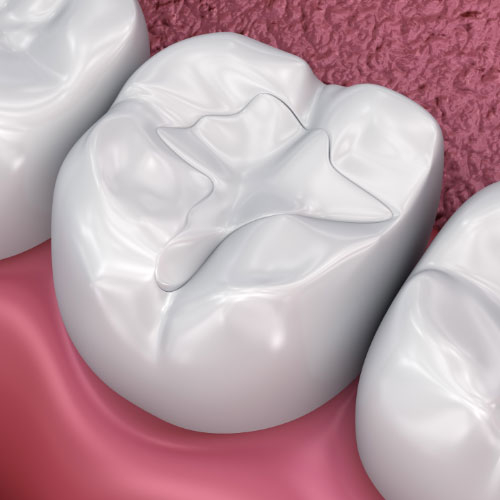What are dental fillings?
Dental fillings are a synthetic resin that dentists use to restore the shape and stability of a tooth that has been damaged by decay, trauma, or disease. This resin protects injured or broken teeth that have chipped and are susceptible to decay. They also restore worn out or eroded teeth. A cavity that has formed on the enamel of a tooth is also repaired by a dental filling. Dental fillings allow for ease of chewing and to prevent further damage to the tooth.
Dental fillings are extremely common, have a high success rate, and the procedure is very simple. There are varying types of fillings that fit different needs, but composite fillings are the most common. Most people prefer them because of their color and natural appearance.

How does a cavity fillings work?
Due to tooth decay or trauma, we using cavity fillings to repair the missing tooth structure. If not removed immediately, the decay will continue to spread within the tooth and possibly to adjacent teeth. During the filling procedure, the decay is first removed from inside the cavity to prevent the rot from spreading further. We restore the strength and integrity of the tooth by molding and hardening the filling to the shape of the missing structure. This makes the tooth healthy once again and preventing further tooth decay.
What is a dental sealant?
A dental sealant is a tough, tooth-colored material placed on the surface of the back teeth. The chewing surface on the back teeth naturally have pits, grooves, and fissures, which can trap food that can’t be easily removed with brushing. They also help protect against decay by creating a smooth surface on the back teeth. Dental sealants do not affect chewing or cause any other discomfort because they only fill in the small pits, grooves, and fissures.
We recommend placing dental sealants on children’s teeth once the permanent back teeth have grown in. In many other situations, they can also be useful to adults.
How long does a dental sealant last?
The lifespan of dental sealants varies, with many lasting for years. Once they wear off, they can be easily repaired. It is important to understand that dental sealants only protect the pits, grooves, and fissures of the back teeth. To protect other surfaces of the tooth from decay and cavities, Fluoride and other preventive cleaning methods may be necessary.